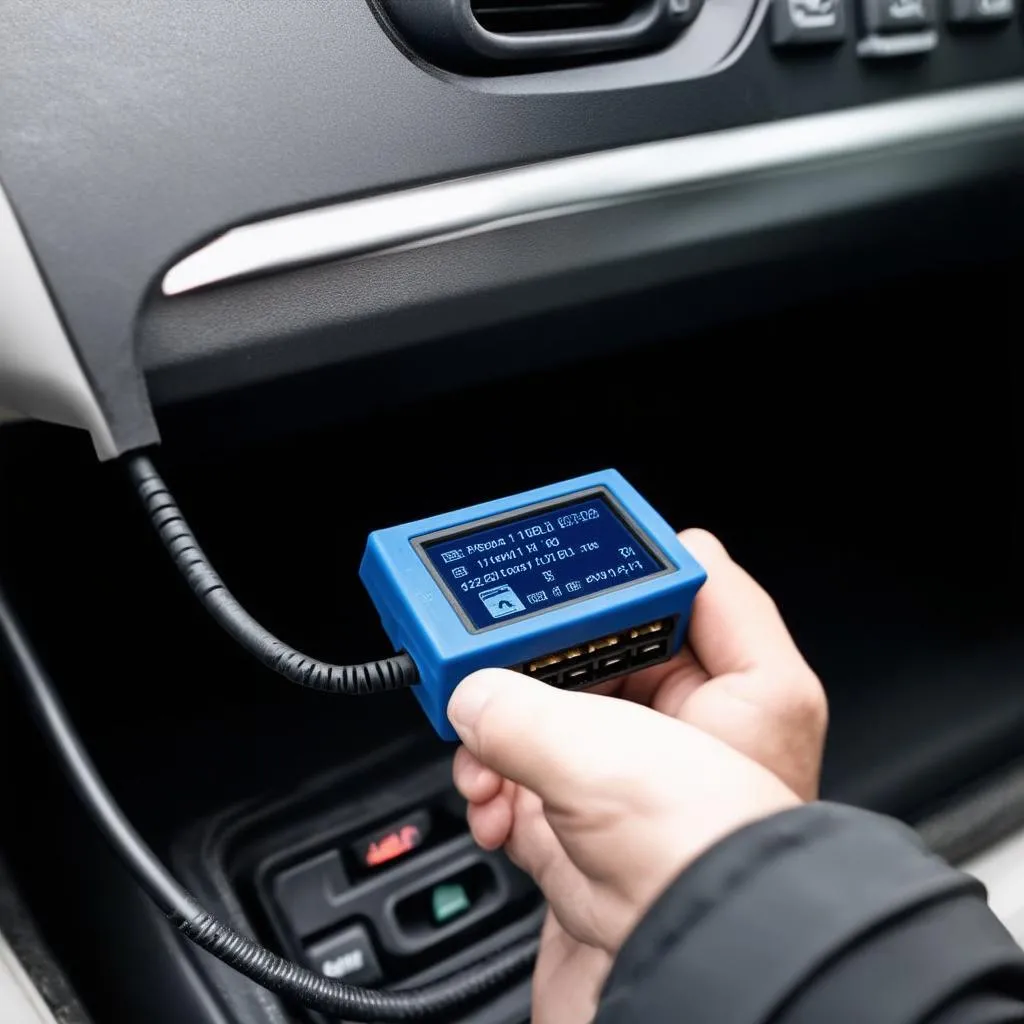Have you ever been driving down the road when suddenly a strange light pops up on your dashboard – the dreaded “check engine” light? It can be a heart-stopping moment, filled with questions and uncertainty. What’s wrong with my car? Is it safe to drive? How much is this going to cost me? The answer, my friend, often lies within the cryptic language of Diagnostic Obd Codes.
Think of these codes like your car’s own secret language, whispering clues about what’s happening beneath the hood. Like a skilled mechanic armed with a high-tech decoder ring, understanding these codes can empower you to diagnose problems, communicate effectively with technicians, and potentially save yourself from costly repairs.
Deciphering the Enigma: What Exactly are Diagnostic Obd Codes?
“OBD” stands for On-Board Diagnostics, a system built into your car’s computer to monitor various systems and emissions-related components. When something goes awry, the OBD system triggers a warning light on your dashboard and stores a corresponding diagnostic trouble code (DTC), commonly known as an OBD code, in its memory.
Unmasking the Code: What do those letters and numbers mean?
These codes follow a standardized format, usually consisting of a letter and four digits:
- The First Letter: Indicates the system related to the code. For instance, “P” stands for Powertrain, “B” for Body, “C” for Chassis, and “U” for Network & Vehicle Integration.
- The First Digit: This can be a “0” for a standardized, generic code, or a “1” for a manufacturer-specific code.
- The Second Digit: This digit points to the specific subsystem involved, such as fuel and air metering, ignition system, or auxiliary emission controls.
- The Last Two Digits: These indicate the specific fault or issue detected within that subsystem.
From Cryptic Code to Clear Diagnosis: Using OBD Codes to Your Advantage
1. Empowered Car Owners: Imagine this: your car starts sputtering and the check engine light flashes. Instead of panicking, you calmly connect an OBD-II scanner (a handy and affordable device), read the code, and discover it’s a P0301 – a misfire in cylinder 1. Armed with this knowledge, you know it could be a simple spark plug issue rather than a catastrophic engine failure, easing your mind and allowing you to make informed decisions.
2. Bridging the Communication Gap: Walking into a mechanic’s shop with a basic understanding of OBD codes can empower you to communicate effectively about your car’s symptoms. Instead of saying, “My car is making a funny noise,” you can confidently explain, “I’m getting a P0420 code, which points to a potential catalytic converter issue.” This not only saves time but also ensures you’re both on the same page regarding the problem.
3. A Money-Saving Tool: Diagnosing car problems early on can prevent minor issues from escalating into major (and expensive) repairs. A simple oxygen sensor malfunction, if ignored, can eventually damage your catalytic converter, leading to a hefty repair bill. Regularly checking your OBD codes can help you catch and address these issues proactively.
 Car Diagnostic Tool
Car Diagnostic Tool
Beyond the Technical: OBD Codes and the Human Connection
Interestingly, there’s a curious parallel between the diagnostic process in the automotive world and the realm of human interaction. Just as a skilled mechanic uses OBD codes to understand and address a car’s ailments, we too rely on subtle cues, body language, and communication patterns to decode the emotional states of those around us.
Think about it – a friend’s withdrawn demeanor or a sudden shift in their tone of voice can be seen as their personal “check engine” light, signaling that something might be amiss. By paying attention to these subtle cues and engaging in open communication, we can foster deeper understanding, empathy, and stronger relationships.
Exploring Common OBD Code Questions and Concerns:
1. Can I clear OBD codes myself?
While you can clear OBD codes using a scanner, it’s crucial to address the underlying issue first. Simply erasing the code is like silencing an alarm clock without addressing the reason you set it in the first place.
2. Are there any spiritual implications of OBD codes?
While some might find metaphorical connections between car troubles and life’s challenges, it’s important to approach car maintenance from a practical and logical standpoint.
3. How often should I check my OBD codes?
It’s generally a good idea to check your codes monthly or whenever your check engine light comes on. This proactive approach can help you stay ahead of potential problems.
Delving Deeper: Resources for Further Exploration
For those eager to learn more about specific OBD codes, here are some valuable resources:
- Techcarusa.com: Our website offers a wealth of information on OBD codes, including specific code definitions, troubleshooting tips, and helpful articles like our guide to OBD-II Charts for 2002 Ford F-150, Diagnostic Trouble Codes for OBD-I Equipped GM Vehicles, and how to Extract OBD Fault Codes with a Computer.
- Manufacturer-Specific Resources: Consult your car’s owner’s manual or the manufacturer’s website for detailed information on your vehicle’s specific OBD codes and diagnostic procedures.
Seeking Expert Assistance? We’re Here to Help!
If you’re ever facing a particularly perplexing car problem or need assistance with diagnostic tools like the Bosch OBD 1200 for clearing DTCs, don’t hesitate to reach out. Our team of automotive experts is available 24/7 via WhatsApp at +84767531508 to provide guidance and support.
 Mechanic using Diagnostic Tablet
Mechanic using Diagnostic Tablet
The Road to Automotive Enlightenment
Understanding diagnostic OBD codes might seem daunting at first, but it’s a journey well worth taking. By embracing these codes as clues to your car’s well-being, you can become a more informed and empowered car owner, equipped to tackle car troubles head-on.
Remember, knowledge is power, and when it comes to your car’s health, a little knowledge can go a long way in keeping you safely and smoothly on the road ahead.